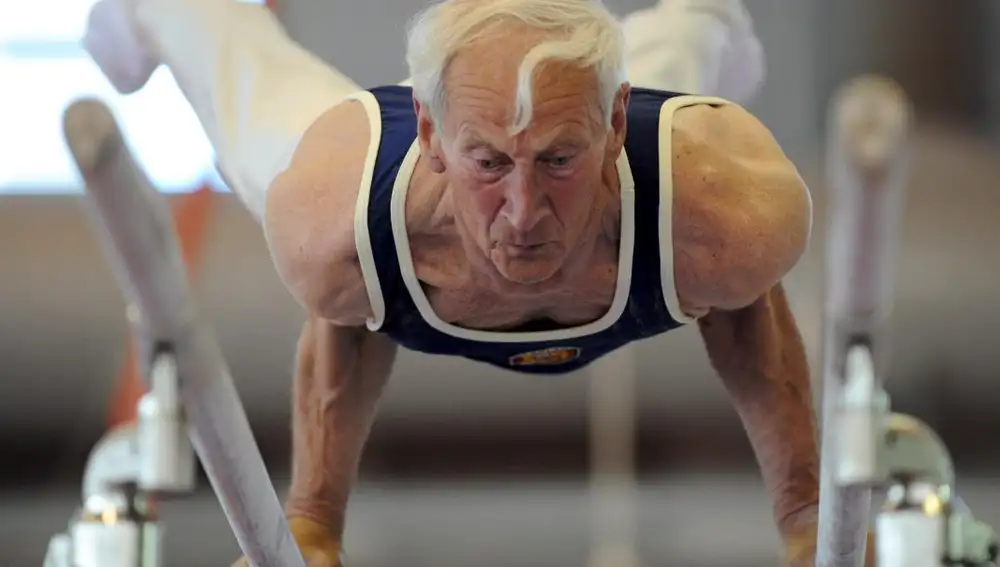Study reveals how much exercise you need to do to live longer

There are many factors that go into living a long, healthy, disease-free life. Some of them cannot be changed, such as genetics and the gender we are born with. However, many other habits such as diet, exercisereducing stress, quitting smoking and getting proper sleep can be modified.
According to the available literature and research conducted to date, physical activity is one of the most important factors in increasing life expectancy. For this reason, much of the scientific research published so far attempts to answer the question of How much exercise do you need to do to live a long and healthy life?.
However, a new study by researchers at the University of Jyväskylä in Finland, which is currently undergoing peer review, found that while exercise is important for living a long life, following other healthy lifestyle habits may have an even greater effect.
Longevity: Exercise itself may not be a factor
Anna Kankaanpää, a researcher at the Gerontology Research Center at the Faculty of Sports and Health Sciences at the University of Jyväskylä and lead author of this study, decided to study the correlation between leisure-time exercise and mortality risk. Cause? Difference in views.
The author explains that previous research shows a link between exercise and a lower risk of all-cause mortality and cardiovascular disease. However, some work (such as this study published in December 2021) argues that exercise does not reduce all-cause mortality and the occurrence of cardiovascular disease in older people or people with chronic diseases.
This, according to scientists from Jyväskylä, may show that in addition to exercise, there are other factors that influence human life expectancy. For their study, the Finnish research team used data from more than 11,000 pairs of adult twins from the Finnish Twin Cohort.
The amount of physical activity that study participants engaged in was assessed using questionnaires administered in 1975, 1981, and 1990. Participants were divided into four groups: sedentary, moderately active, active and very active. And the mortality of participants was tracked until 2020, for 45 years.
At the end of the study, Kankaanpää and his team found that more than a third, nearly 40%, of the sedentary group died during mortality follow-up in 2020, which was the highest percentage among the four groups. Participants in active groups had from 15% to 23% lower risk of mortality for all reasons compared to the sedentary group.
“I was not surprised (by these results) because numerous observational studies have consistently shown this association,” Kankaanpaa says. But one question remained: How do other lifestyle factors affect mortality risk?

The researchers took into account other conditions such as body mass index (BMI), health status, alcohol consumption and smoking. When applying these factors, the mortality rate of study participants the sedentary group fell to a maximum of 7%. That is, even if they did not exercise but followed a healthy lifestyle, their risk was significantly reduced.
How much exercise should you do
The scientists also found that participants in the sedentary and highly active groups experienced accelerated biological aging compared to the moderately active and active groups. Thus, the researchers believe that the beneficial association of long-term exercise with a reduced risk of death is largely due to not only physical exercise, but also other factors health related.
Regular physical activity does not reduce the risk of mortality, but may be an indicator of an overall healthy lifestyle, which helps prolong life person. “It would be interesting to study whether the same thing happens with cause-specific mortality, such as mortality from cardiovascular disease,” says Kankaanpää when asked about the next steps for this research. “Besides, I would like to find out the reasons for this Accelerated biological aging is observed in very active participants“.
After reviewing this study, Dr. David Cutler, a board-certified family physician at Providence St. John’s Medical Center in Santa Monica, California, said: MNT The conclusion of this study is that the health benefits of physical activity may reflect overall healthy behavior rather than exercise being responsible for the reduction in mortality.
“(This) is consistent with my own observation that although many people exercise for health benefits, they often they hope it will discourage unhealthy behavior“That’s not true,” Dr. Cutler explained. “This notion of ‘compensatory belief’ was supported by the research findings.”
Exercising after a day of excess does not counteract it.
“For example, there are those who believe that if you exercise, you will reverse the adverse effects of smoking. And, in fact, the study showed that mortality in the sedentary group improved when factors such as obesity and smoking were eliminated.” Dr. Cutler also said it is important to remember that doing healthy physical activity does not compensate for poor nutritionusing alcohol and drugs or other harmful activities such as ignoring hypertension, high cholesterol or diabetes.
“Regular exercise can enhance these benefits, but it does not offset the detrimental consequences of ignoring these proven benefits,” he adds. To summarize, this study clearly shows that the opportunity exercise is associated with reduced mortality versus just being sedentary and that some exercise is better than none.
However, Cutler adds that studies have shown that the benefits of exercise are offset. For example, “studies of the number of steps people take each day have shown that after a certain amount of walking (about 7,000 or 8,000 steps per day), the benefits are offset. So walking “20,000 steps a day doesn’t mean you’re better off than if you walked 7,000 steps,” he notes.
So a very high degree of exercise may not be required “Receiving health benefits should be the message,” he points out, although the study has limitations. For example, this study was conducted in a very established population in Finland, which is not necessarily the same as the population in Finland. Spain or USA.
